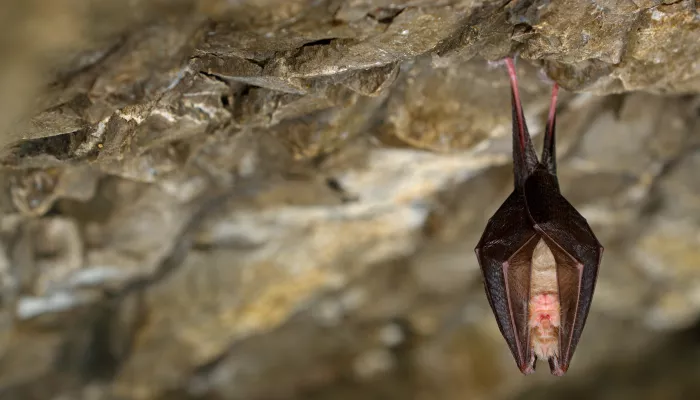About
Formerly a cave-dweller, the lesser horseshoe bat now tends to roost in old houses, churches, stables and barns. All UK bats are nocturnal, feeding on midges, moths and other flying insects that they find in the dark by using echolocation. Lesser horseshoe bats feed amongst vegetation in lowland valleys, rarely flying more than five metres above the ground. They may take large prey back to a roost or perch. From May, mixed-sex maternity colonies are formed, and the females have a single pup. Lesser horseshoe bats hibernate over the winter in caves, disused mines, tunnels and cellars.
How to identify
One of our smallest bats, the lesser horseshoe bat is the size of a plum. Like the greater horseshoe bat, it has a characteristically fleshy nose that is shaped like a horseshoe. Its fur is grey-brown on its back and white underneath.
Did you know?
The generic name of the lesser horseshoe bat, Rhinolophus, is derived from the Greek meaning 'nose crest'; the specific name, hipposideros, means 'horse-iron' or horseshoe. This name refers to the complex noseleaf of this bat, which is thought to focus the echolocation pulses that it emits to find its prey.

